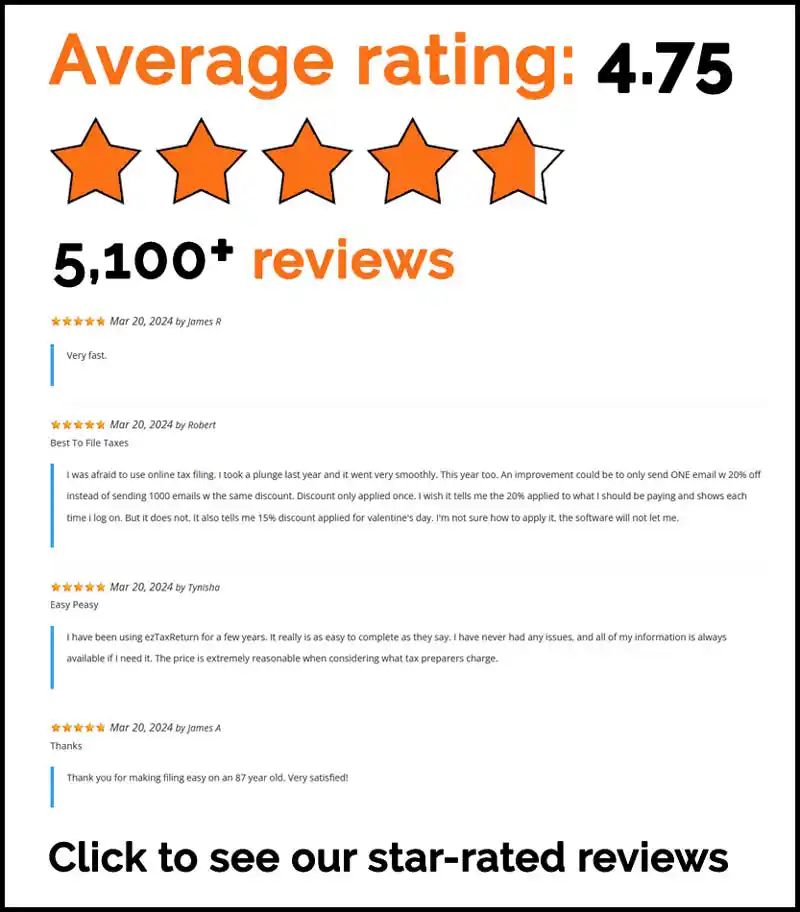The information in this article is up to date for tax year 2024 (returns filed in 2025).
Can you believe that 2024 is almost over? Before we bring this year to a close, there are some important tax moves you need to make. By taking action on these year-end tax planning strategies, you could lower your tax bill and keep more money in your pocket when you file your taxes.
1. Beef up your retirement savings before year-end
One of the best year-end tax planning strategies is contributing to your retirement accounts. There are a couple of reasons why you should consider beefing up your 401(k) and IRA before the year ends:
- Reduce your taxable income: Contributions to a 401(k) are made pre-tax, which means you lower your taxable income and reduce your overall tax liability for the year.
- Maximize employer contributions: Many employers offer matching contributions. For example, if your employer matches 50% of your 401(k) contributions up to 6% of your salary, that’s essentially free money you’re leaving on the table if you don’t contribute enough to get the full match.
For 2024, the contribution limit for a 401(k) is $23,000 (or $30,500 if you’re 50 or older). Also, consider investing in an IRA as part of your year-end tax planning. Traditional IRA contributions may be tax-deductible, and Roth IRA distributions are tax-free in retirement. The 2024 contribution limit for IRAs is $7,000 ($8,000 if you’re 50 or older). Keep in mind that IRA contributions can be made until April 15, 2025, but contributing before the end of the year gives you immediate tax relief.
2. Contribute to an HSA for year-end tax savings
Health Savings Accounts (HSAs) are another great tool for year-end tax planning. Contributions to an HSA are tax-deductible, reducing your taxable income for the year. To be eligible for an HSA, you must be enrolled in a high-deductible health plan (HDHP).
For 2024, you can contribute up to $4,150 for individual coverage or $8,300 for family coverage. Those 55 or older can contribute an additional $1,000. If you haven’t maxed out your HSA contributions yet, consider doing so before the year ends to take full advantage of the tax benefits.
3. Spend your FSA balance before year-end
If you have a Flexible Spending Account (FSA), make sure to spend your balance before December 31st to avoid losing it. Many employers offer a grace period, but it’s safest to use up your FSA funds by the year-end deadline.
Here are a few eligible expenses to consider purchasing with your FSA:
- Blood pressure monitors
- Contact lenses and solutions
- Eyeglasses
- Hearing aids and batteries
4. Sell bad stocks to offset gains: Year-end tax strategy
If you’ve had some underperforming stocks in your portfolio, consider selling them before the end of the year to offset any capital gains. This is a common year-end tax planning move known as tax-loss harvesting.
By selling investments that have lost value, you can offset up to $3,000 in capital gains or other income. Losses that exceed the $3,000 limit can be carried over into future years. This strategy can help reduce your overall tax burden and is an excellent move in your year-end tax planning.
5. Gather your medical and dental bills for potential deductions
If you or your dependents had significant medical or dental expenses this year, gather your receipts now. You may be able to deduct certain medical expenses if you itemize your deductions. To qualify, your expenses must exceed 7.5% of your adjusted gross income (AGI).
Common deductible medical and dental expenses include:
- Doctor, dentist, and chiropractor visits
- Prescription medications
- Hospital care and long-term care
- Medical equipment (e.g., eyeglasses, hearing aids)
This year-end tax planning move can provide valuable deductions if your medical expenses are high enough. For a full list of expenses you can or cannot deduct, read IRS Publication 502.
6. Take your Required Minimum Distributions (RMDs) on time
If you have a traditional IRA, SEP IRA, SIMPLE IRA, or employer-sponsored retirement plan, it’s important to take your Required Minimum Distributions (RMDs) by the end of the year to avoid penalties. Generally, you must begin taking RMDs at age 73. If you fail to take the required distribution, you will face a penalty tax of 25% of the amount not withdrawn. Make sure to stay on top of this year-end tax planning step to avoid costly mistakes.
7. Donate to charity and maximize your tax deductions
Another simple yet effective strategy for your year-end tax planning is making a charitable donation. Giving to a charity not only allows you to support causes you care about but also offers potential tax benefits. Donations made before the year ends can reduce your taxable income, helping you lower your overall tax liability when you file your taxes. Whether you donate cash, goods, or stocks, it’s important to keep records of your contributions for tax purposes. This year-end move is a great way to give back while potentially reducing your tax bill—just make sure to act before December 31st to take advantage of the deductions.
Bonus: Pre-register for tax filing and save money
If you’re planning to file your taxes online, pre-registering with a tax service like ezTaxReturn can help you save money on tax preparation fees. When you pre-register, you can receive a 20% discount on your tax filing. It’s a simple step that allows you to save money while preparing for tax season.
Make these year-end tax planning moves before December 31st
By taking these year-end tax planning steps, you can reduce your tax bill and potentially increase your tax refund. The key is to act before December 31st, so you don’t miss out on important tax-saving opportunities. Whether you contribute to retirement accounts, sell stocks, or gather medical receipts, the right planning now can make a significant impact on your tax situation next year. If you need help filing your taxes, be sure to use trusted online tax preparation software like ezTaxReturn to make the process easier.
File your taxes online, fast and easy!
The articles and content published on this blog are provided for informational purposes only. The information presented is not intended to be, and should not be taken as, legal, financial, or professional advice. Readers are advised to seek appropriate professional guidance and conduct their own due diligence before making any decisions based on the information provided.




